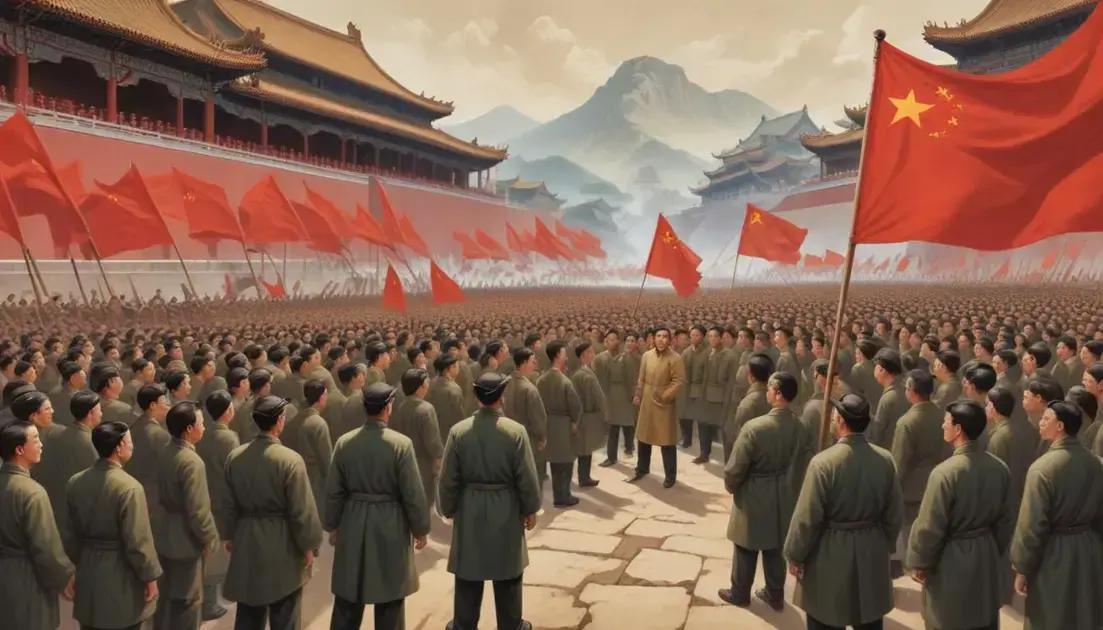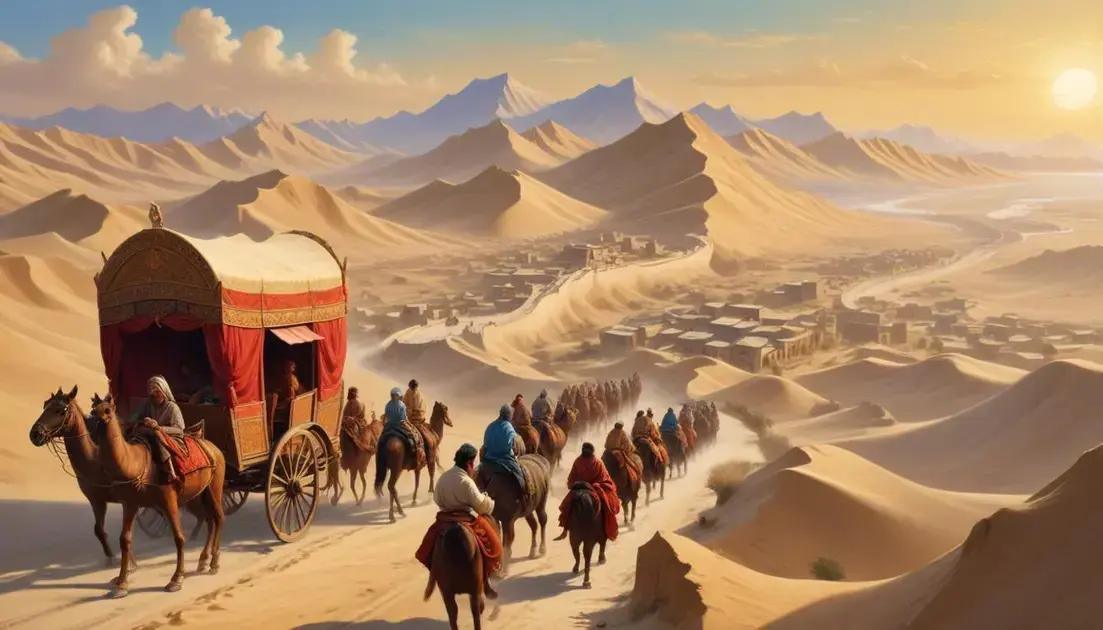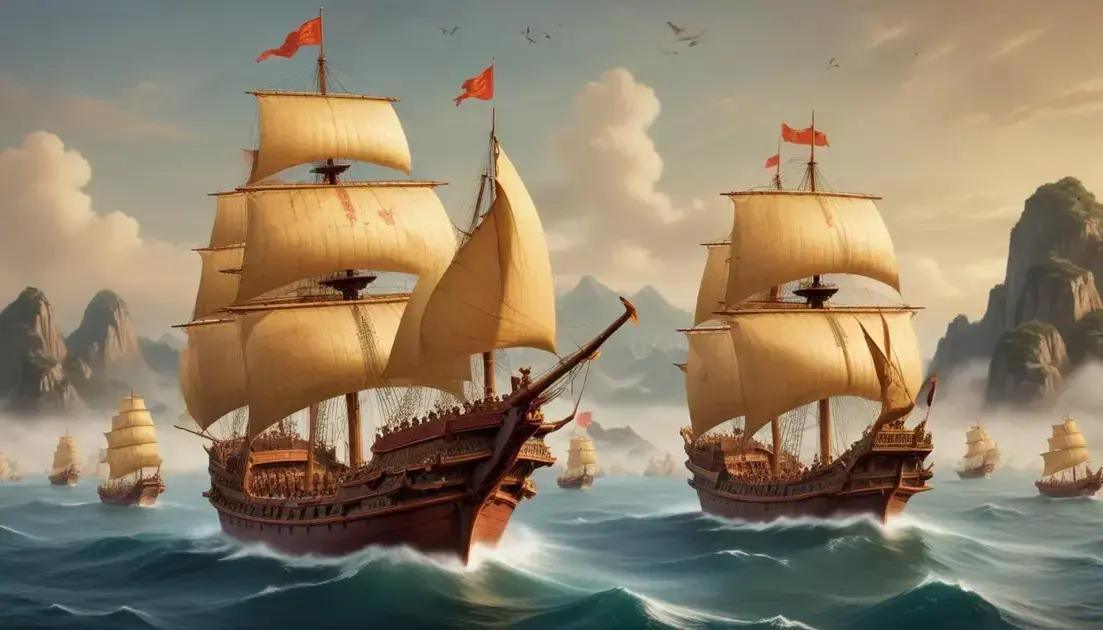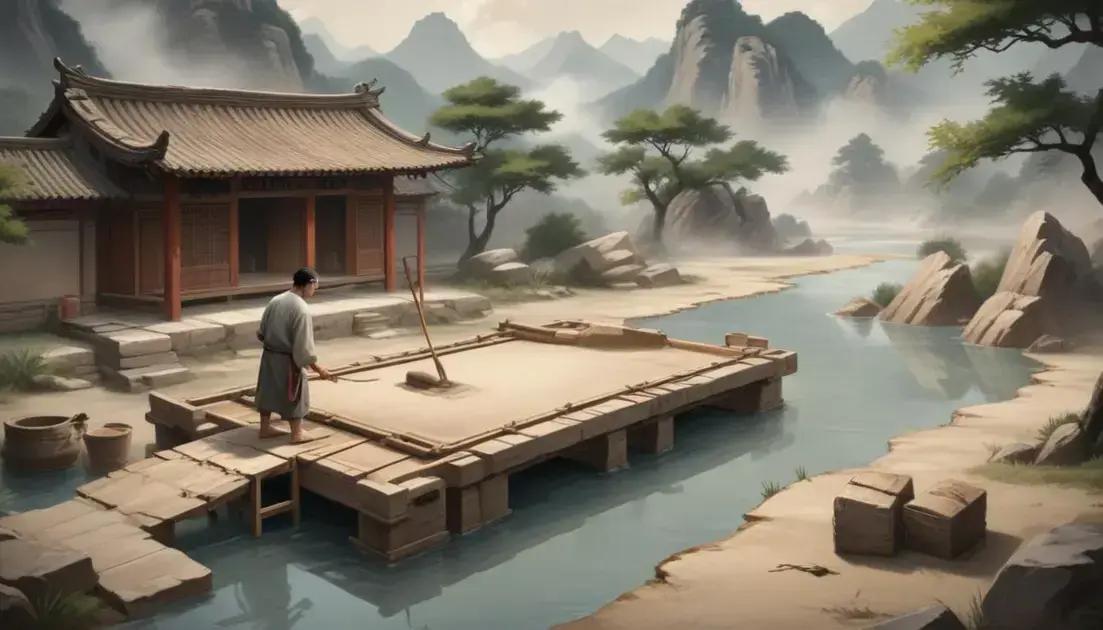
Chinese Cultural Revolution: The 10 Years that Transformed China
The Cultural Revolution, initiated by Mao Zedong from 1966 to 1976, aimed to reinforce communist ideology in China, leading to widespread persecution and societal upheaval. It caused significant disruptions in education, targeted cultural practices, and fostered distrust among communities. The global reaction included criticism from foreign nations and increased academic interest in its implications. Today, the legacy of this period influences China’s political landscape and societal values, emphasizing the importance of remembering history to prevent future mistakes and promote cultural preservation.
The Cultural Revolution was a significant chapter in China’s history, marked by turmoil and transformation. Ready to dive into a decade that reshaped a nation?
Overview of the Cultural Revolution
The Cultural Revolution in China started in 1966 and lasted until 1976. It was aimed at preserving China’s communist ideology. Mao Zedong, the leader of the Communist Party, believed that the country needed to be purified from capitalist influences.
Key Goals of the Cultural Revolution
The main goals included destroying the Four Olds: old customs, old culture, old habits, and old ideas. This was done through campaigns and rallies that encouraged people to attack anyone seen as a threat to communist values.
Impact on Society
During the revolution, many people were persecuted. Intellectuals, teachers, and those who opposed the movement faced harsh treatment. Schools closed, and the youth formed groups called Red Guards to enforce Mao’s policies.
Changes in Daily Life
Daily life changed dramatically. Art and literature were strictly controlled. Many traditional practices were banned. People had to follow the rules of the party closely. Fear was common, as anyone could be accused of being counter-revolutionary.
Conclusion of the Revolution
The Cultural Revolution officially ended in 1976 with Mao’s death. It left a lasting impact on society. Many people still remember it as a painful time in China’s history.
Key Events and Figures
During the Cultural Revolution, many key events shaped China’s history. One important event was the launch of the movement in 1966 by Mao Zedong. He aimed to revive the communist spirit among the youth.
The Red Guards
The Red Guards were crucial to the events. This group, made up mostly of students, supported Mao’s vision. They targeted intellectuals and anyone seen as a threat.
Mao’s Encouragement
Mao encouraged the Red Guards to attack the Four Olds: old customs, old culture, old habits, and old ideas. This sparked chaos across the country.
Key Figures
Besides Mao, several figures influenced the revolution. Lin Biao, Mao’s close ally, played a major role as the vice chairman of the Communist Party. He backed the Red Guards and promoted Mao’s thoughts.
Public Struggles
Another key event was the public struggles. People were forced to confess their crimes against the state. This led to fear and distrust among communities.
Ending of the Movement
The movement continued intensively until Mao’s death in 1976. Afterward, the party began to roll back many of these drastic actions. The revolution marked a turbulent time in China’s journey.
Impact on Chinese Society
The Cultural Revolution had a huge impact on Chinese society. Many people faced persecution during this period. Intellectuals and professionals were targeted for their beliefs and ideas.
Education System Disruption
Schools and universities were closed. This interrupted education for millions of students. Young people were turned into Red Guards instead of focusing on their studies.
Cultural Suppression
The revolution suppressed traditional culture. Books, art, and music were destroyed if they were deemed too old or western. Many cultural treasures were lost forever.
Social Relationships
Friendships and families were affected. People were encouraged to report on each other. Trust broke down, leading to fear and isolation in communities.
Work and Economy
Workplaces changed drastically. Many skilled workers were removed from their jobs. This hampered progress and led to inefficiency in industries.
Long-Term Consequences
The Cultural Revolution left scars on society. It altered how people interact with each other. Many still feel the effects today, as they reflect on the past.
Global Reaction and Consequences
The Cultural Revolution sparked reactions worldwide. Many foreign governments and organizations criticized the events in China. This movement raised questions about human rights and freedom.
International Condemnation
Countries like the U.S. and Britain spoke out against the violence. They expressed concern over how the Chinese government treated its people.
Media Coverage
News reports highlighted the chaos. Journalists covered stories of persecution and cultural destruction. The revolution gained global attention and sparked debates.
Academic Interest
Scholars began to study the Cultural Revolution closely. They wanted to understand its impacts and lessons. Universities created programs to analyze the political and social effects.
Long-term Consequences
Over time, the revolution changed how China interacted with the world. It affected diplomatic relations and trade. Many nations were cautious in dealing with China.
Influence on Activism
The events inspired activists everywhere. People began to fight for human rights and democracy. The Cultural Revolution became a symbol of the struggle against oppression.
Legacy of the Cultural Revolution
The Cultural Revolution left a deep legacy in China. Its effects are still felt today, shaping how people think and act. Many lessons were learned from this turbulent time.
Political Changes
After the revolution, China shifted its political focus. Leaders pushed for reform and modernization. This change aimed to improve relationships with other countries.
Societal Impact
The revolution also changed family dynamics. Many families were torn apart due to political strife. Trust among individuals often remains fragile in communities.
Cultural Preservation
In recent years, there’s been an effort to preserve Chinese culture. Many are trying to revive traditions that were lost during the revolution. This includes arts, music, and literature.
Education and Awareness
Today, schools teach about the Cultural Revolution. Understanding this period helps people learn from past mistakes. Awareness promotes critical thinking about history and politics.
Ongoing Discussions
Discussions about the Cultural Revolution continue. People debate its significance and lessons across various fields. This ongoing conversation impacts how history is viewed in China and beyond.
Conclusion
In conclusion, the Cultural Revolution dramatically shaped China’s history. It influenced politics, society, and culture in ways that still matter today. Understanding this period helps us learn valuable lessons about trust, power, and the importance of preserving culture.
As we reflect on the events and impacts, it’s clear that discussing the Cultural Revolution remains crucial. These conversations guide how we view history and foster awareness about human rights and dignity. By sharing our knowledge, we can ensure that such events are never forgotten and that progress continues towards a better future.


